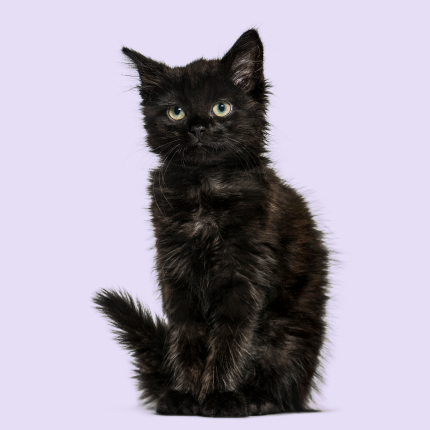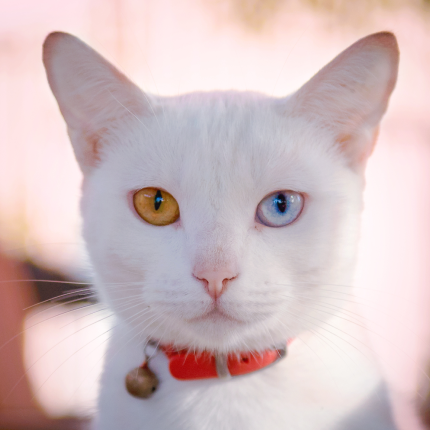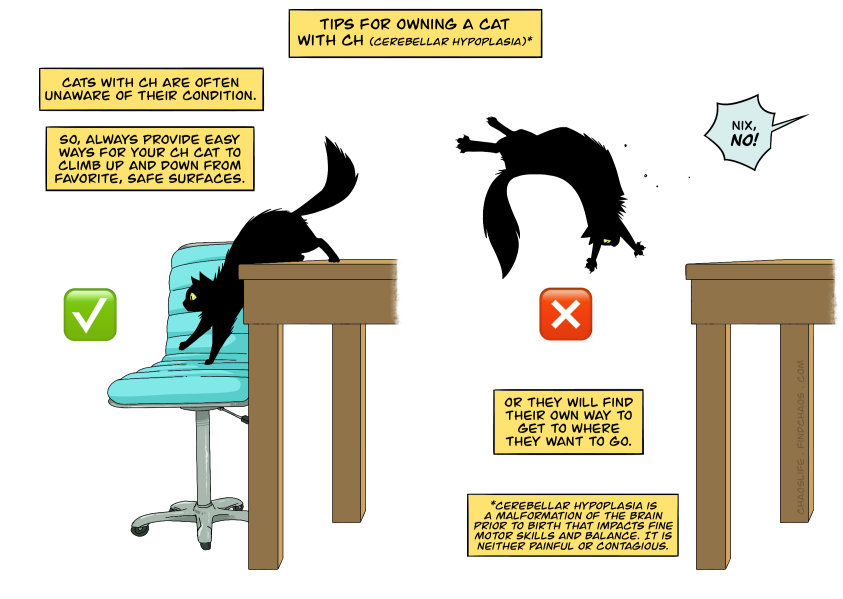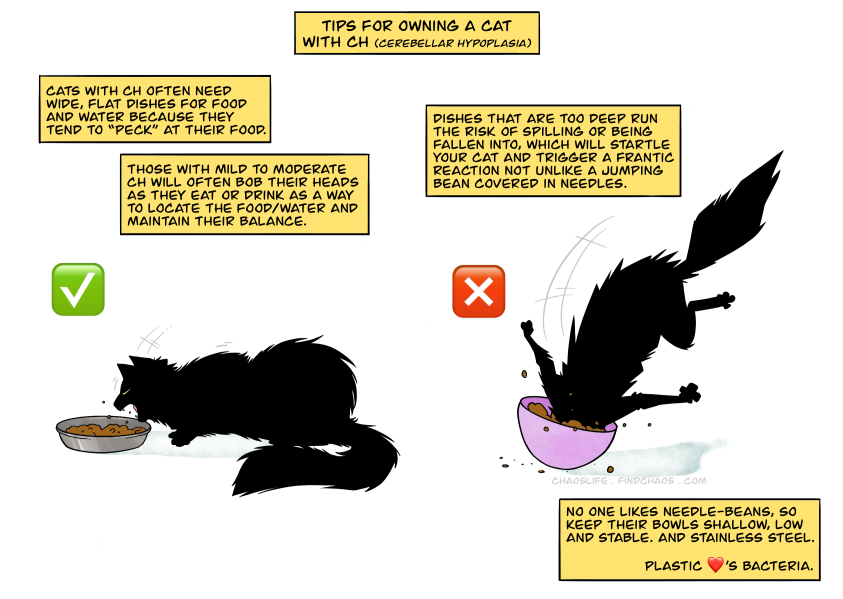Tips for Owning a ‘CH Cat’

Cerebellar Hypoplasia, often referred to as CH, is a neurological condition that affects cats and dogs, leading to unsteady movements, tremors, and difficulties in coordination, reminiscent of ataxic cerebral palsy in humans. Cats with CH frequently experience challenges with balance and may even struggle to walk altogether. Notably, CH in cats is non-progressive, which means it does not worsen with age.
The primary cause of Cerebellar Hypoplasia in cats is typically the mother contracting the Panleukopenia virus during pregnancy. If the virus is transmitted to the kittens towards the end of gestation, they may be born with CH. Importantly, kittens with CH are neither infected with nor carriers of the Panleukopenia virus; it simply hinders the growth of their cerebellum in the womb. Additionally, trauma or malnutrition during gestation can also trigger Cerebellar Hypoplasia.
Unfortunately, many veterinarians and rescue professionals remain unaware of CH, leading to the unfortunate premature euthanization of many CH-afflicted cats before receiving a proper diagnosis. It’s essential to understand that cats with CH do not experience pain and can lead entirely normal, happy, and healthy lives. They have a standard life expectancy and do not pose any risk of contagion to other animals or humans. Cats with CH tend to adapt to their condition over time, requiring varying degrees of additional care depending on the severity of their symptoms. While they may be more susceptible to accidental injuries, they can still thrive with proper support and care.
The comic artists of Chaos Life shared their tips for adopting a cat with CH based on their experience with their own cat with CH, ‘Nix’:
Tips for Owning a Cat With CH:
“Cats with GH are often unaware of their condition, so always provide easy ways for your CH cat to climb up and don from favorite, safe surfaces, or they will find their own way to get to where they want to go.”
“Cats with CH often need wide, flat dishes for food and water because they tend to ‘peck’ at their food. Those with mild to moderate CH will often bob their heads as they eat or drink as a way to locate the food/water and maintain their balance. Dishes that are too deep run the risk of spilling or being fallen into, which will startle your cat and trigger a frantic reaction not unlike a jumping bean covered in needles. No one likes needle-beans, so keep their bowls shallow, low, and stable. Also use stainless steel — plastic loves bacteria.”

Featured Articles

Polydactyl Cats: Just More Beans to Love
Polydactyl cats have become extremely popular in recent times. As a result, more and more people are interested in learning more about this six-toed cat and want to get one of their own. If you are a cat lover intrigued by polydactyl cats, you have come to the right place….

The Odd-Eyed Cat (AKA Heterochromia)
Cats are already beautiful and fascinating creatures, but people are bound to take notice when they have something as captivating as two different colored eyes. Odd-eyed cats always have one blue eye paired with either a green, yellow, or brown eye. This form of heterochromia occurs in other animals, including…

Why Do Cats Roll Over Into Their Backs But Not Let You Touch Their Bellies?
It’s common knowledge dogs love to have their tummies rubbed when they freely lay down before you and roll onto their backs. But, if you’re also familiar with cats, you know that when they roll onto their backs with their bellies exposed, rubbing the belly will most likely result in…

